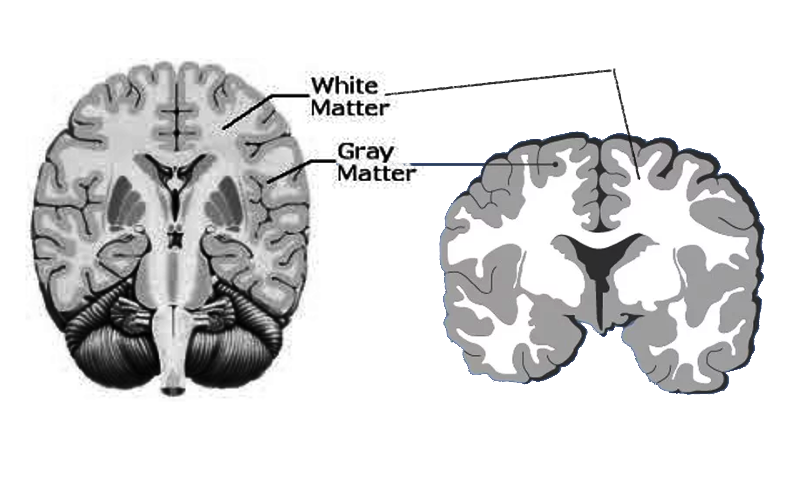[1]
Dolz J, Desrosiers C, Wang L, Yuan J, Shen D, Ben Ayed I. Deep CNN ensembles and suggestive annotations for infant brain MRI segmentation. Computerized medical imaging and graphics : the official journal of the Computerized Medical Imaging Society. 2020 Jan:79():101660. doi: 10.1016/j.compmedimag.2019.101660. Epub 2019 Nov 15
[PubMed PMID: 31785402]
[2]
Shofty B, Mauda-Havakuk M, Ben-Sira L, Bokstein F, Lidar Z, Salame K, Korn A, Constantini S. Surgical Management of "Kissing" Spinal Plexiform Neurofibromas in Neurofibromatosis Type 1 Patients. World neurosurgery. 2020 Feb:134():e1143-e1147. doi: 10.1016/j.wneu.2019.11.124. Epub 2019 Nov 28
[PubMed PMID: 31786384]
[3]
Lee SH, Lee PH, Liang HJ, Tang CH, Chen TF, Cheng TJ, Lin CY. Brain lipid profiles in the spontaneously hypertensive rat after subchronic real-world exposure to ambient fine particulate matter. The Science of the total environment. 2020 Mar 10:707():135603. doi: 10.1016/j.scitotenv.2019.135603. Epub 2019 Nov 18
[PubMed PMID: 31784156]
[4]
Song J, Yang X, Zhou Y, Chen L, Zhang X, Liu Z, Niu W, Zhan N, Fan X, Khan AA, Kuang Y, Song L, He G, Li W. Dysregulation of neuron differentiation in an autistic savant with exceptional memory. Molecular brain. 2019 Nov 7:12(1):91. doi: 10.1186/s13041-019-0507-7. Epub 2019 Nov 7
[PubMed PMID: 31699123]
[5]
Szczepanik JC, de Almeida GRL, Cunha MP, Dafre AL. Repeated Methylglyoxal Treatment Depletes Dopamine in the Prefrontal Cortex, and Causes Memory Impairment and Depressive-Like Behavior in Mice. Neurochemical research. 2020 Feb:45(2):354-370. doi: 10.1007/s11064-019-02921-2. Epub 2019 Nov 30
[PubMed PMID: 31786717]
[6]
Chiao CC, Lin CI, Lee MJ. Multiple Approaches for Enhancing Neural Activity to Promote Neurite Outgrowth of Retinal Explants. Methods in molecular biology (Clifton, N.J.). 2020:2092():65-75. doi: 10.1007/978-1-0716-0175-4_6. Epub
[PubMed PMID: 31786782]
[7]
Staudt N, Giger FA, Fielding T, Hutt JA, Foucher I, Snowden V, Hellich A, Kiecker C, Houart C. Pineal progenitors originate from a non-neural territory limited by FGF signalling. Development (Cambridge, England). 2019 Nov 21:146(22):. doi: 10.1242/dev.171405. Epub 2019 Nov 21
[PubMed PMID: 31754007]
[8]
Batty NJ, Torres-Espín A, Vavrek R, Raposo P, Fouad K. Single-session cortical electrical stimulation enhances the efficacy of rehabilitative motor training after spinal cord injury in rats. Experimental neurology. 2020 Feb:324():113136. doi: 10.1016/j.expneurol.2019.113136. Epub 2019 Nov 28
[PubMed PMID: 31786212]
[9]
Matsuka Y, Afroz S, Dalanon JC, Iwasa T, Waskitho A, Oshima M. The role of chemical transmitters in neuron-glia interaction and pain in sensory ganglion. Neuroscience and biobehavioral reviews. 2020 Jan:108():393-399. doi: 10.1016/j.neubiorev.2019.11.019. Epub 2019 Nov 27
[PubMed PMID: 31785264]
[10]
Cox LM, Schafer MJ, Sohn J, Vincentini J, Weiner HL, Ginsberg SD, Blaser MJ. Calorie restriction slows age-related microbiota changes in an Alzheimer's disease model in female mice. Scientific reports. 2019 Nov 29:9(1):17904. doi: 10.1038/s41598-019-54187-x. Epub 2019 Nov 29
[PubMed PMID: 31784610]

